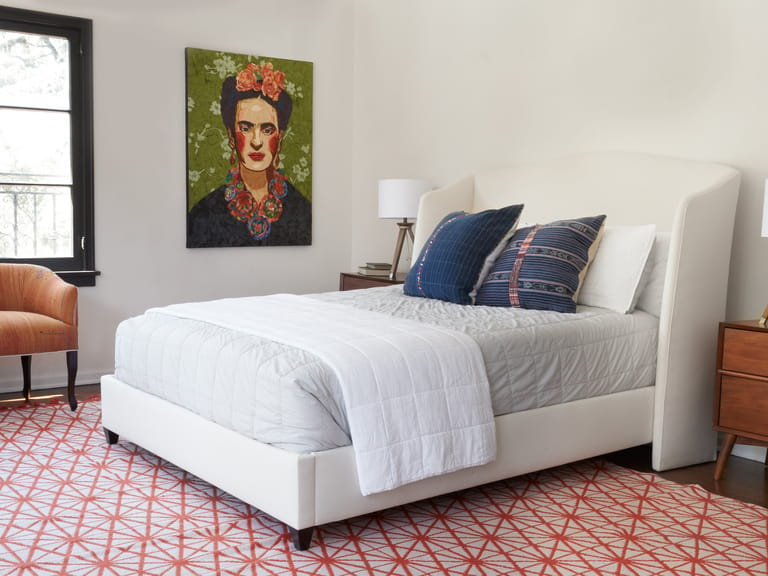Exploring the Concept of Home: The Significance of Bedrooms
The essence of a home transcends mere walls and roofs; it resides in the spaces we curate within. Among these, the bedroom stands as a sanctuary, a realm of rest and rejuvenation, where dreams take flight and comfort reigns supreme. In this article, we delve into the importance of bedrooms, the evolution of bedroom design, and the myriad ways in which one can enhance this personal haven.
The Cultural Significance of Bedrooms
Historically, bedrooms have served not only as places for sleep but also as reflections of personal identity and lifestyle. In ancient cultures, bedrooms were often adorned with symbols of wealth and status, showcasing intricate tapestries and fine furnishings. Today, the focus has shifted towards functionality and comfort, yet the underlying significance remains. Bedrooms are intimate spaces where individuals can express themselves, unwind from the rigors of daily life, and cultivate a sense of peace.
Understanding Bedroom Design Through the Ages
1. The Medieval Era: A Reflection of Status
During the medieval times, bedrooms were a reflection of one’s social status. The wealthy adorned their chambers with lavish tapestries, elaborate canopies, and ornate furniture, while the less fortunate made do with basic bedding. The bed itself was often the centerpiece, symbolizing not just a place for sleep, but a domain of power and privilege.
2. The Industrial Revolution: Functionality Over Opulence
The Industrial Revolution altered the landscape of bedroom design significantly. As mass production became prevalent, furniture became more accessible. Bedrooms transitioned from spaces of grandeur to practical havens that prioritized functionality. Simplicity and efficiency were the hallmarks of this era, leading to designs that favored clean lines and minimalism.
3. The Modern Era: Personalization and Wellness
In contemporary times, the bedroom has evolved into a personal refuge that reflects individual preferences and lifestyle choices. The rise of wellness culture has also influenced bedroom design, emphasizing the importance of sleep quality and relaxation. Bedding options have diversified, and the integration of technology has transformed how we experience rest. Adjustable beds, such as the Clean Bedroom Level 2 Adjustable Bed Base, exemplify this trend, offering customizable comfort tailored to individual needs.
Clean Bedroom Level 2 Adjustable Bed Base
Experience customized comfort and modern convenience with an adjustable base designed to enhance every night’s rest. Independent head and foot lifts let you fine-tune your position for optimal support, while soothing massage and adjustable underbed LED lighting create a relaxing bedtime atmosphere. Built-in dual USB ports keep your devices charged and close at hand, blending comfort, function, and smart design into a truly restorative sleep experience.
Price: $1,099.00
Learn More
Guidance for Creating a Functional Bedroom
Crafting the ideal bedroom involves a thoughtful approach to design, functionality, and comfort. Below are essential elements to consider when creating a space that is both aesthetically pleasing and conducive to rest.
1. Selecting the Right Furniture
Furniture plays a crucial role in enhancing the functionality and aesthetics of living spaces, particularly in bedrooms. Key items include platform bed frames, adjustable beds, and essential bedding options such as comforters, all contributing to creating a restful environment. For instance, platform bed frames like the Urban Woods Fairfax Bed Frame offer a modern, minimalist foundation for mattresses, while adjustable beds can provide customizable comfort for users.
2. Creating a Calming Color Palette
Colors can significantly influence mood and relaxation. Soft hues such as blues, greens, and neutrals are often recommended for bedrooms, as they promote tranquility and restfulness. Incorporating these colors into bedding, wall paint, and decor can create a soothing atmosphere conducive to sleep.
3. Emphasizing Lighting
Lighting is an essential aspect of bedroom design that should not be overlooked. Layered lighting, including ambient, task, and accent lighting, can enhance the functionality of the space while also contributing to its ambiance. Adjustable lighting options, such as dimmer switches or bedside lamps, can help create the perfect environment for relaxation and reading.
The Future of Bedroom Design
As we look to the future, bedroom design is likely to continue evolving alongside advancements in technology and shifts in lifestyle preferences. The integration of smart home systems, sustainable materials, and wellness-focused products will shape how we experience our personal spaces. Emphasizing health and comfort, future bedrooms may prioritize ergonomic designs and eco-friendly practices, ensuring that they remain sanctuaries of rest in an ever-changing world.
Conclusion: The Timeless Sanctuary
In conclusion, bedrooms hold a timeless significance in our lives, serving as personal sanctuaries that reflect our individuality and cater to our needs for rest and rejuvenation. By understanding the evolution of bedroom design and incorporating thoughtful elements into our spaces, we can create environments that not only enhance our wellbeing but also inspire creativity and tranquility. As we navigate the complexities of modern life, let us remember the importance of nurturing our spaces — for in them, we cultivate the foundation for our dreams.


